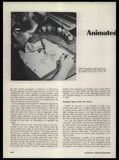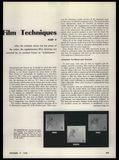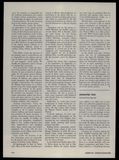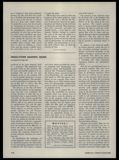



After the animator draws the key poses of the action, the supplementary fill-in drawings are executed by an assistant known as "in-betweener.”
IN THE CLOSING paragraphs of Chapter 4 of this series, which appeared here last month, the term “cel level” was explained as the relative position on the animation stand occupied by one or more celluloid or acetate sheets on which the action images are drawn and inked. Usually there are four: the cel on the bottom, next to the background, is the first level; the one on top, the fourth.
It is a function of the animator to break down the various actions in a given scene and consign each to a definite cel level. Action that remains in the background or that works under other action is put on a lower cel level; the reverse holds for action that works in front of characters. Action can move from one cel level to another, but this isn’t advisable unless absolutely necessary because of the slight jump in color tone that usually results when changing the number of cels above an illustration, as explained last month.
Whenever there is some non-moving prop in the foreground – a tree, rock, stump, bush, etc. – behind which the action of the scene works at some time, it is placed on the top cel level and termed an “overlay.” The prop, portion of the terrain, or whatever it might be, is painted in the same fashion tones and colors as the background, either in cels directly on the cel, or on regular water-color paper – then cut out and cemented onto the cel. The purpose of an overlay is to increase the pictorial effectiveness of a scene by providing it with a feeling of depth and third dimension. It can also help “frame” a scene to enhance pictorial composition, This technique was lavishly used in such Disney productions as “Snow White and The Seven Dwarfs” and “Bambi,” and in the more recent full-length animation feature “Sleeping Beauty,” to be released by Walt Disney early in 1959.
[…]